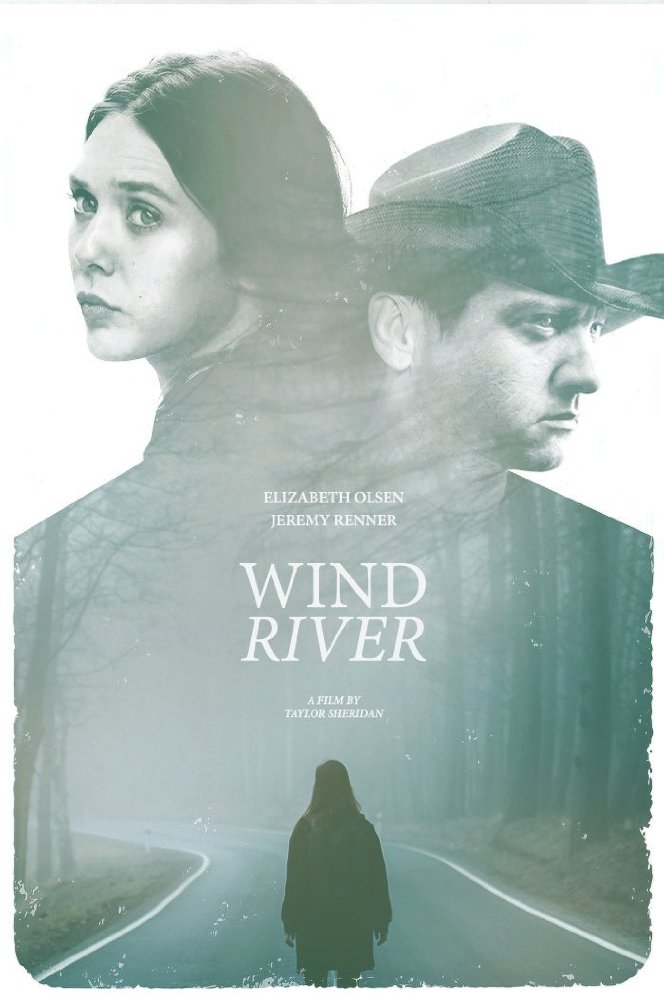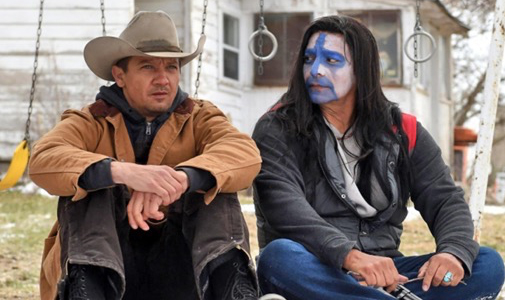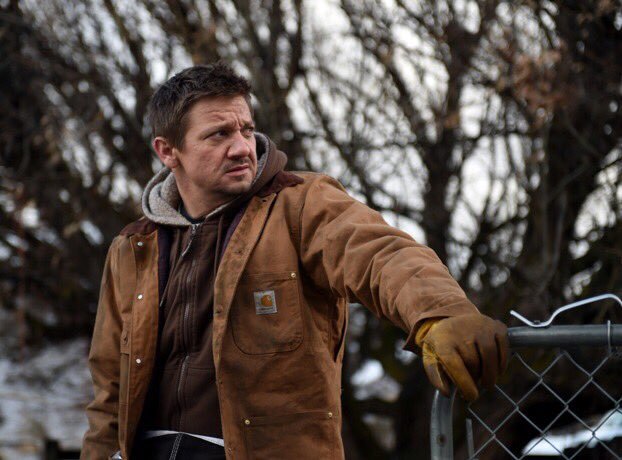by Lynn Lee
 It should come as no surprise that writer-director Taylor Sheridan, currently hot in Hollywood after his Oscar screenplay nomination for Hell or High Water, is an actual, bona fide cowboy. Perhaps that’s why his work feels like such a throwback—to an era in which quietly capable men, silently toting unspoken burdens, took on the joyless task of meting out frontier justice. At the same time, he’s shown a canny gift for placing such old-school archetypes in a distinctly modern, of-this-moment social and political context, making their struggles feel unexpectedly timely or, rather, timeless. That gift is on ample display in his new film, Wind River, which is now in wide release after nabbing the best directing prize in the Un Certain Regard category at Cannes earlier this year.
It should come as no surprise that writer-director Taylor Sheridan, currently hot in Hollywood after his Oscar screenplay nomination for Hell or High Water, is an actual, bona fide cowboy. Perhaps that’s why his work feels like such a throwback—to an era in which quietly capable men, silently toting unspoken burdens, took on the joyless task of meting out frontier justice. At the same time, he’s shown a canny gift for placing such old-school archetypes in a distinctly modern, of-this-moment social and political context, making their struggles feel unexpectedly timely or, rather, timeless. That gift is on ample display in his new film, Wind River, which is now in wide release after nabbing the best directing prize in the Un Certain Regard category at Cannes earlier this year.
Set on a remote, wintry Indian reservation in Montana, the film marks the third installment in a loose trilogy of Westerns penned by Sheridan (the first two being Sicario and Hell or High Water), though Wind River is the first one he directed...
The movie centers on Cory Lambert (a fantastic Jeremy Renner), a Fish & Wildlife Service agent tasked with protecting local livestock from wild predators (if you detect a giant honking metaphor in that, you’re not wrong), who discovers the dead body of a young Native American woman miles from the nearest shelter. The victim shows signs of having been sexually assaulted and having run for her life – barefoot in the snow – before succumbing to the frigid cold. Tribal police call in the FBI and get a solo rookie agent, Jane Banner (Elizabeth Olsen), who’s greener than a Christmas tree but smart enough to realize she needs backup. She turns to Cory, with his deep knowledge of the area, longstanding ties to the Indian community, and extensive experience as a hunter and tracker, to assist in the investigation. It gradually emerges that he has his own, deeply personal reasons for doing so.

Thus summarized, the movie might sound like little more than a glorified crime procedural; Sheridan himself has jokingly referred to it as “CSI Wyoming.” Pedestrian or no, Sheridan puts the mystery through its pacings with impressive economy and speed, amping up the suspense and underscoring without belaboring the ugliness of the underlying crime before taking an almost Tarantino-esque turn near the end. More importantly, his handling of the broader context shows a sensitive touch one doesn’t commonly see in this genre. While there’s no fat on the movie’s narrative bones, there is a striking richness in the characterization of both the people and the place surrounding it. As he did in Hell or High Water, Sheridan takes special pains to draw a stark portrait of a straitened community in which most of the inhabitants have grown inured to living in a constant state of quiet desperation. He stops short of poverty porn, however, allowing the most significant characters their full measure of grace and dignity. Cinematographer Ben Richardson (Beasts of the Southern Wild) imbues the snow-covered landscape—occasionally cut through by the sharp swaths of snowmobiles—with a harsh beauty that emphasizes both the elemental simplicity of this world and the corrosive effect of malignant outsiders. As Cory responds when the movie’s main villain (in one of the few scenes that feels overwrought) shrieks about the snow and the silence, snow and silence is all that the natives of this place were given, yet they still found a way to survive.
Of course, the fact that it’s Cory who gets to say this points to the elephant in the room, which is the movie’s serious case of white male savior syndrome. (I found it unintentionally funny that Renner literally spends so much of the film – including his most heroic moments – in literal snow camouflage.) To be fair, the film is respectful in its treatment of the Native American characters, featuring standout turns from Graham Greene as the wry and dryly sardonic tribal police chief and Gil Birmingham (who played Jeff Bridges’ partner in Hell or High Water) as the victim’s grieving father. But this prompts the inevitable question of why they needed to be supporting rather than lead – even if the only answer is “Because Hollywood thinks no one would see the alternative.” The movie’s depiction of women is problematic, too, although in some ways an improvement for Sheridan in that both Olsen’s character (unlike Emily Blunt’s in Sicario) and the victim (Kelsey Chow) gain more rather than less agency as the movie goes on. Still, the power dynamic between Olsen and Renner remains so skewed that I couldn’t help thinking how much more interesting it would have been if Cory had been an experienced, capable, all-knowing middle-aged woman and the rookie FBI agent a naïve, in-over-his-head younger man. There’s no reason that story couldn’t have been just as effective, if not more so.
Well, ok, there is one reason, and it’s an important one: Renner. His performance is not only the linchpin of the movie but the best thing about it, exuding just the right balance of gravitas and vulnerability as he peels back the layers of Cory’s patient endurance to reveal the still-raw pain at his core. It’s easily the strongest work he’s done since The Hurt Locker. So even as I chafe against his casting here, I can’t really complain about the end result. At its heart, this isn’t a whodunit or a procedural but a portrayal of grief and the acceptance of living with such grief. That this type of acceptance is chiefly coded as masculine stoicism doesn’t detract from its fundamental power. As embodied by Renner, it elevates Wind River from a merely well made film to a profound emotional statement.

Grade: B+
Oscar chances? Probably not, though Renner deserves consideration